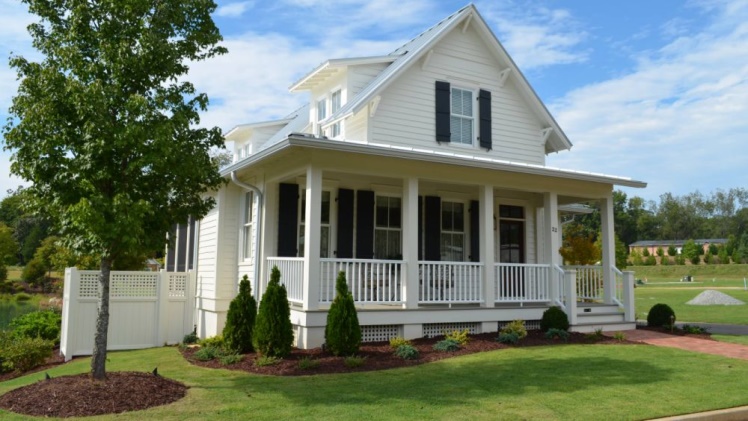It can be hard to know which house siding materials will work best for different climates. This is an important decision since the right material and installation process can make your home look great while protecting it from the elements. In this article, we’ll take a closer look at some of the most popular siding materials and which ones are best suited for different US climates.
What is a House Siding?
It is the exterior protective material that covers a home’s structure and provides insulation, weatherproofing, and aesthetic value. It can come in wide varieties, such as wood, vinyl, aluminum, fiber cement, stone veneer, brick veneer, stucco, and more. Choosing the right one for your climate can help you get maximum protection against extreme temperatures while also saving energy costs.
If you’re looking for the best siding materials, be sure to check out reliable companies that may provide you with the best service possible. At Mighty Dog Roofing, Wayne, New Jersey, you can be sure that you’ll get the right type of siding to fit your home and climate.
Let’s take a look at the most popular house siding materials and which ones are best for different US climates:
#1: Wood Siding
Wood siding is a great choice for many types of climates. It’s natural and aesthetically pleasing, it provides excellent insulation, and there are plenty of options to choose from – such as cedar shakes, redwood shingles, and more. However, wood siding requires regular maintenance due to its susceptibility to weathering, rot, and insect damage.
#2: Vinyl Siding
Vinyl siding is one of the most common siding materials in the US due to its affordability, ease of installation, resilience to dents and scratches, energy efficiency, and low maintenance requirements. It doesn’t require painting or staining as wood siding does, but you should be aware that it may fade over time.
When it comes to installing vinyl siding on your home, hiring a mobile home professional siding contractor can save you time, money, and stress because they have access to high-quality materials and the tools necessary to install them correctly; they understand how the climate of an area can affect the condition of your siding over time.
#3: Fiber Cement Siding
The appearance of real wood is achieved using fiber cement siding without the effort and upkeep. For added strength and durability, glass fibers are added to the mixture of cellulose fibers, sand, and Portland cement. Fiber cement siding is a great option for many US climates since it is resistant to mold, fire, hail, decay, and insects.
It also comes in a variety of colors and textures, so you can choose something that suits your home perfectly.
#4: Aluminum Siding
Aluminum siding is a great choice for wet climates. It’s lightweight and easy to install, provides excellent insulation, and is also resistant to rot and corrosion. It comes in various colors as well as finishes that can mimic the look of wood or stone. However, aluminum siding may dent more easily than other materials.
#5: Stone Veneer Siding
Stone veneer siding is a great way to add texture and elegance to any home. It’s made from natural stone that’s been cut into thin pieces, so it provides the same insulation and protection as regular stone but at a fraction of the cost. It also requires minimal maintenance, making it an ideal choice for climates with extreme temperatures or weather conditions.
#6: Stucco Siding
Sand, cement, and lime are the ingredients of stucco siding, which is put to a home’s exterior in a few layers. Extreme weather conditions won’t harm it because of how tough it is. Moreover, it has remarkable insulating qualities and a stylish texture. Stucco also requires less upkeep, making it the perfect choice for those who are busy.
#7: Brick Veneer Siding
Brick veneer siding is composed of thin layers of real brick that are applied to the exterior of a home. It provides excellent insulation and weather protection, as well as an attractive aesthetic. Brick veneer also requires minimal maintenance, which makes it ideal for busy homeowners who don’t have time to keep up with regular upkeep.
#8: Concrete Siding
Concrete siding is a great choice for homes in extreme climates. It’s extremely durable and can withstand strong winds, hail, and other harsh weather conditions. Plus, it provides excellent insulation and low-maintenance requirements. However, it does not have much aesthetic value compared to other types of siding materials.
#9: Metal Siding
One of the strongest types of siding available is metal. It can survive powerful winds and hail and is resistant to rot and rust. It also comes in a range of colors and patterns and needs little upkeep.
The climate in the US can vary, depending on which state you live in. In the cooler northern regions, such as Maine and Vermont, vinyl siding is a great choice for keeping homes warm during cold months. It’s also durable, so it can withstand strong winds that may occur during winter storms.
In warmer climates like Florida and Texas, fiber cement siding is often the go-to material because of its fire resistance and low maintenance requirements. The material also offers excellent insulation from the heat in the summertime.
Although wood siding has been widely used for many years, depending on your climate, it may not always be the best option. For instance, wood will be vulnerable to decay and mildew if you reside in a location with high humidity levels or regular downpours. Stone veneer or aluminum siding are preferable in these conditions.
When selecting a house siding material for your US climate, make sure to consider all of the factors above. Each type has its own advantages and disadvantages, so choose something that will provide you with maximum protection against extreme temperatures while also saving energy costs. With careful research, you should be able to find the perfect fit for your home!

